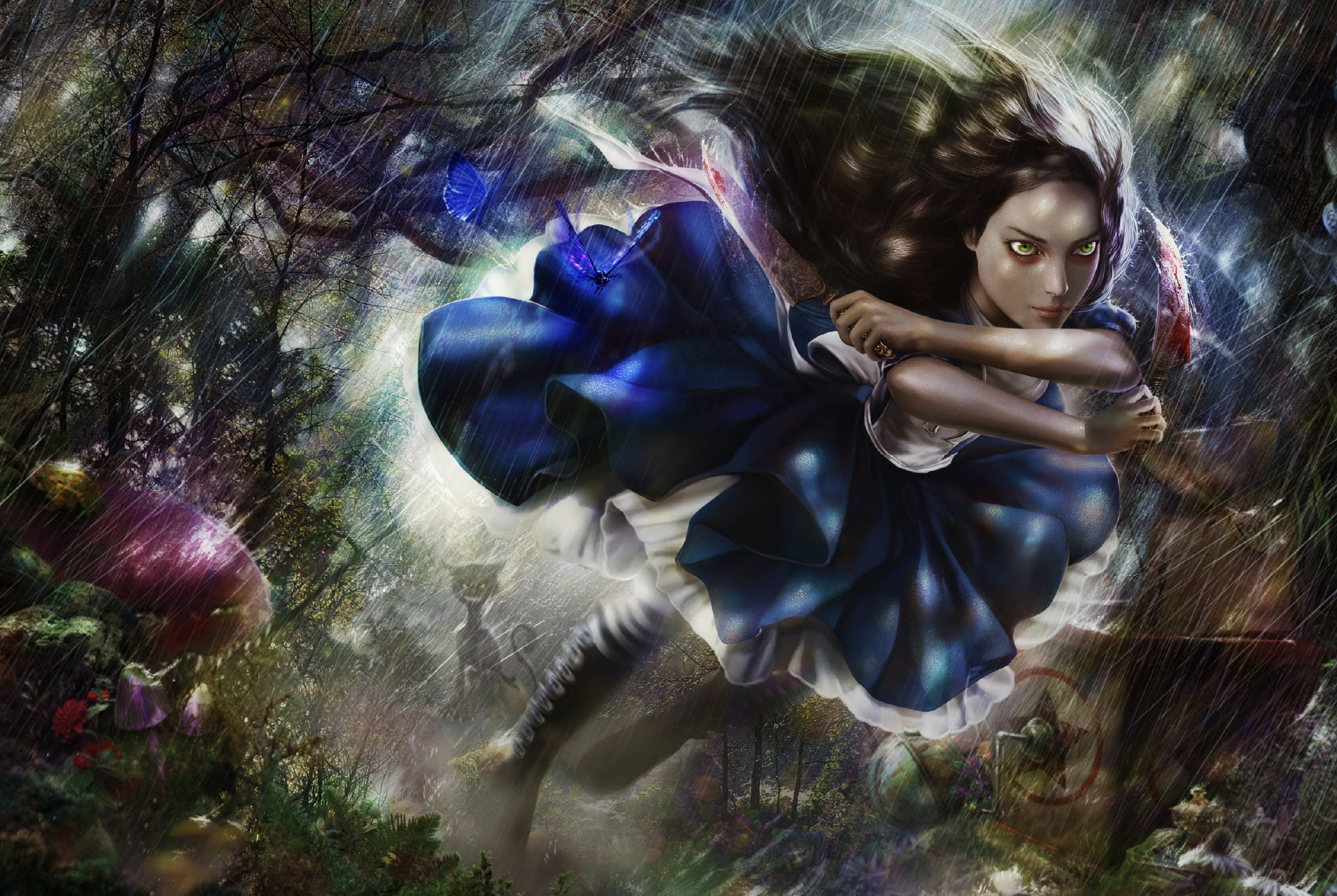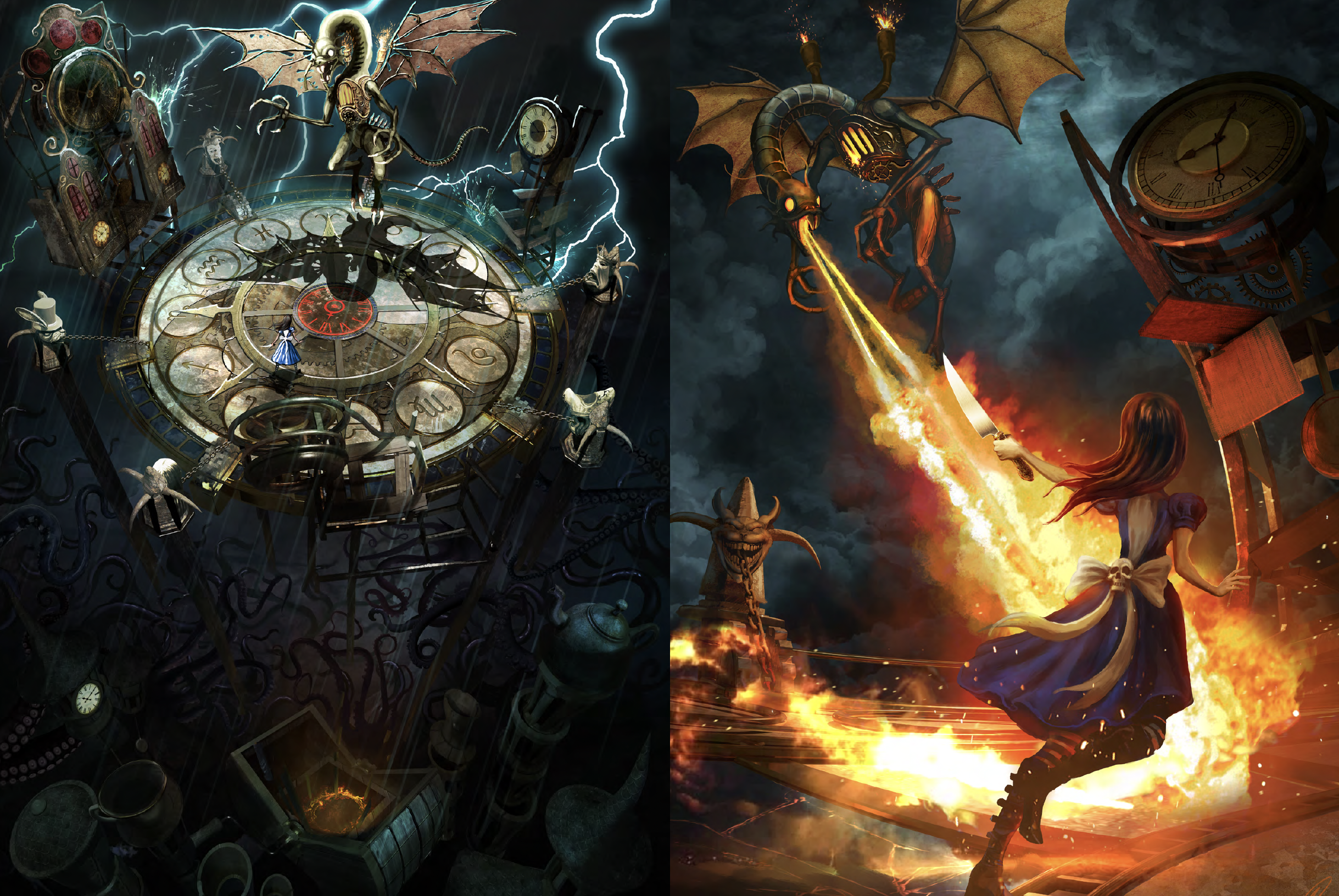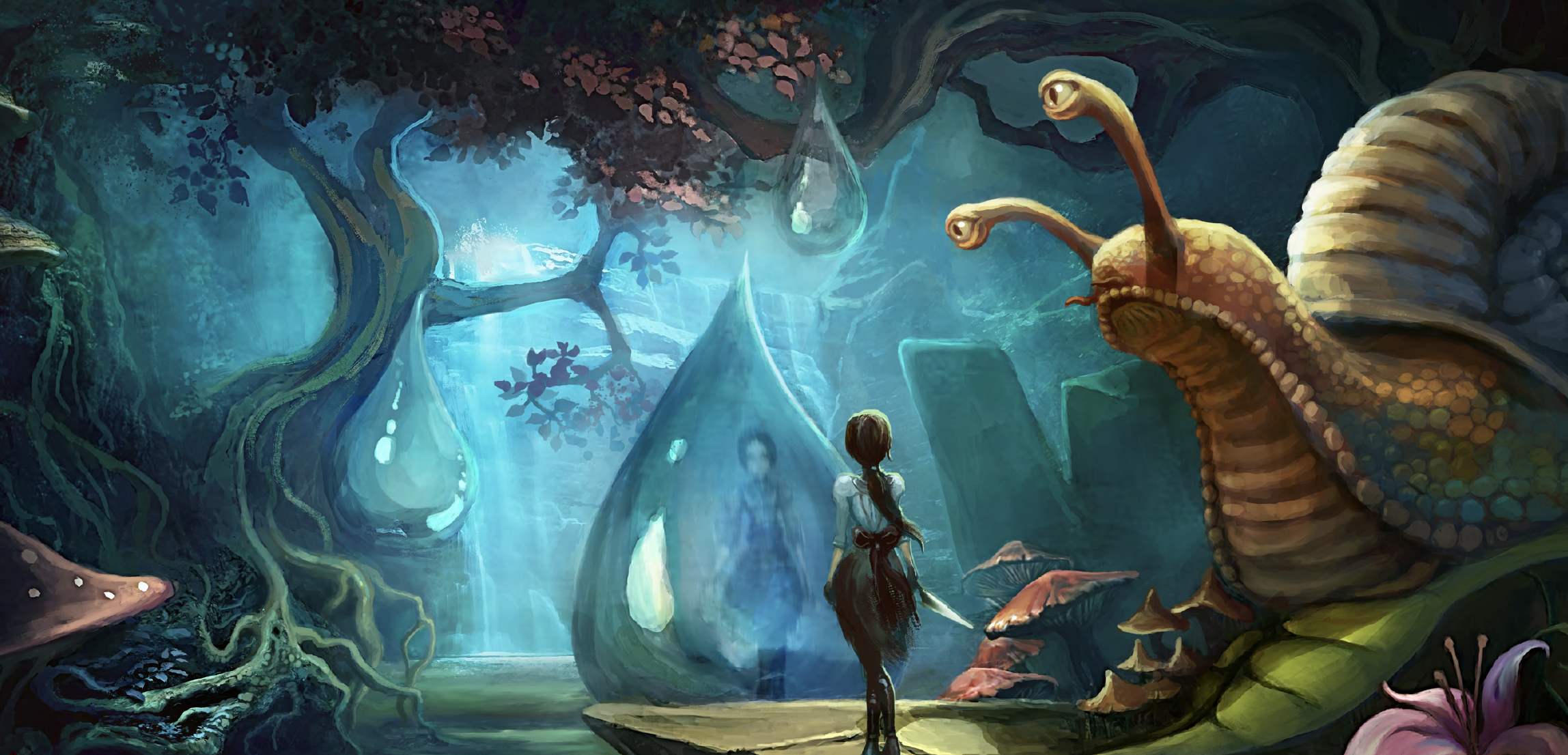I want to call this incredible action game with a harrowing story, bloodthirsty combat, and a psychedelic fantasy world my favorite game – but it doesn’t actually exist
Opinion | Alice: Asylum has been banished to purgatory, but that doesn't stop me from loving it

Alice: Asylum's psychotic heroine, Alice, spends most of her time trying to make sense of the carnage in her funhouse mind, looking for just a few downy feathers of hope stashed somewhere inside it. What she doesn't know is that the blurry phantom of her inner child is shockingly good, and the emotional journey of that soft, white revelation easily makes Alice: Asylum my favorite action game – if only it were actually a game, and not just a sinfully elaborate 414 page document I can't stop poring over.
The Alice: Asylum Design Bible PDF – a pitch on the third and final game in American McGee's Alice series, a haunted interpretation of Lewis Carroll's 1865 story Alice in Wonderland – warns that it is "completely subject to change." Yet the ensuing 414 pages are filled with preposterously minute detail of everything that would happen in Alice: Asylum from the moment you press "start" (the Bible opens with a title screen), to the seconds after the credits roll (the Bible reveals two secret endings).
The book was published online after six years of work, or "20,000 hours of effort," as McGee writes in the Bible's introduction, and so the black pages of the Bible show you everything you could ever want to know: how to use alchemy to grow restorative butterfly wings made of sunshine; elaborate sketches of how Alice can swim, flounce, and walk tightropes with the lightness of a cotton candy wisp; a necklace that sets Alice's hair on fire, enabling special attacks with names like Scorching Blade; what Alice looks like bald…

It's difficult to think of Alice: Asylum as anything other than what it's clearly desperate to be: a game. But after EA officially canceled the title in 2023 and denied McGee ownership of the Alice IP, Alice: Asylum will never become one.
Nonetheless, the Design Bible made an impression on me like one of Cupid's arrows – "pierced to the bones and marrow," as a translation of Roman poet Ovid says. Call me dramatic, but I already felt like I had a soul connection to the Victorian torment that is Alice: Madness Returns, the 2011 sequel that [spoilers] allows 19-year-old Alice to rather proudly shove her abuser in front of a train, as any girl should. But before murdering her despicable psychiatrist Dr. Bumby, Alice only ever kills in Wonderland, a treacherous daydream she falls into like a hidden universe and spends the majority of her days navigating.
So, inspired by the complicated stages of grief, Alice: Asylum explores the bilious aftermath of the murder in a way that soothes me on my own, sometimes mountainous path to healing from abuse and mental illness.
After encounters in Wonderland with both her fading inner child and the reality of her enraged 19-year-old self, who appears as a red-eyed shadow, Alice eventually finds a cave "where memories go to be recycled into the fertilizer that feeds imagination," the Bible says, marred by lumps of hard onyx and obsidian that imprison Alice's worst memories. "The Shadow does not want these memories to be processed," the Bible explains, "because, once processed, they form the basis for growth beyond the trauma."
Sign up to the GamesRadar+ Newsletter
Weekly digests, tales from the communities you love, and more

I feel these words stick to my mind like the Alice series' iconic Vorpal Blade stays cemented to her hand. Like Alice, I have trouble accepting reality – a place where bad men win, where I get older, where there's no choice but to cry. Even so, reaching the last page of the Alice: Asylum Design Bible brings me a profound sense of peace, a kind I've never felt after finishing another action game. It's not only because I'm desperate to wear the short, buttoned mourning gown Alice wears with ripped tights and black ribbons in the "Depression" stage of the game, dirt up her arms. Though I am.
I simply see myself in Alice's journey of slow acceptance, which luxuriates in peace as often as it descends into chaos. Eventually, Alice and her Shadow merge like spilled gasoline finding a crack in the sidewalk, and true healing seems impossible until Alice's inner child shows up to offer a more gentle path forward.
"You are me," she says to corrupted older Alice. "I am you. And now, we two are one."
Here, Alice realizes that tears, kindness, flowers, and light still flow through her, alongside the rage. With her, I admit to myself that protecting your inner child isn't as simple as meditation YouTube videos may suggest – it's a battle. But there is that little rosebud inside of me that wants to live, and so I let it.
Do you prefer action games that actually exist? Try one of the 25 best action games you can play right now.

Ashley is a Senior Writer at GamesRadar+. She's been a staff writer at Kotaku and Inverse, too, and she's written freelance pieces about horror and women in games for sites like Rolling Stone, Vulture, IGN, and Polygon. When she's not covering gaming news, she's usually working on expanding her doll collection while watching Saw movies one through 11.


